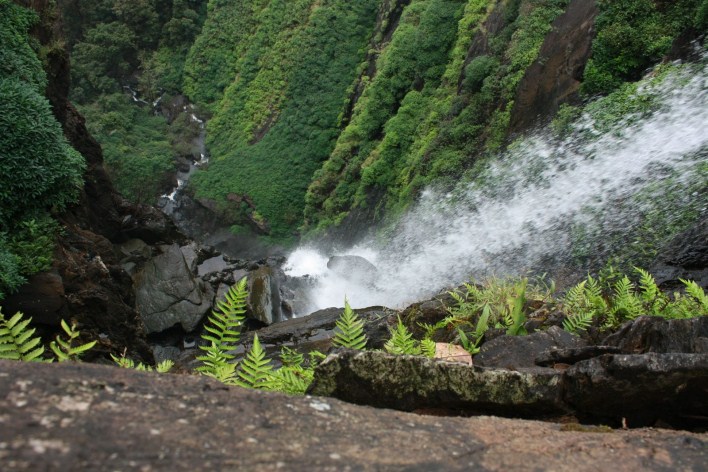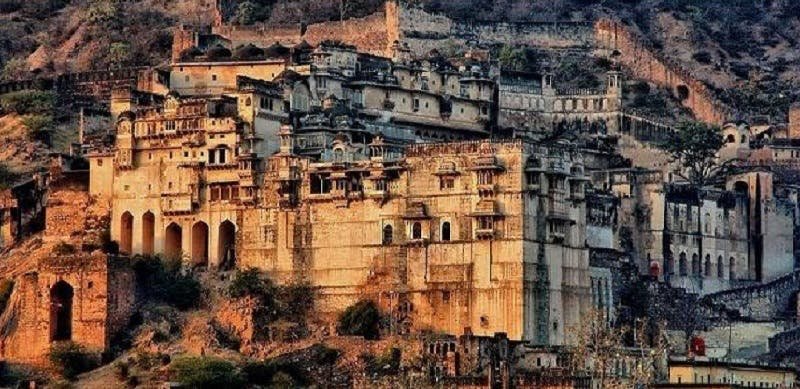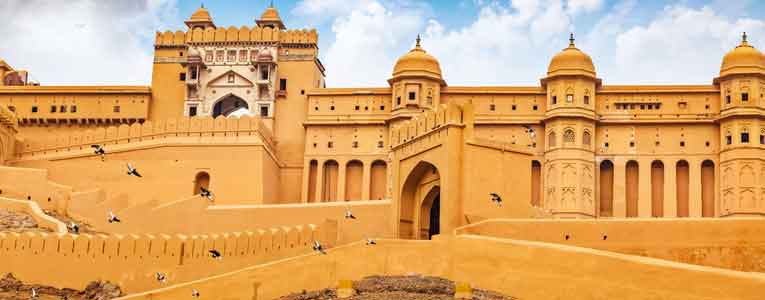India is often considered as a land of unexplored mystery. For centuries, travelers from around worldwide who have made travel to India have been fascinated by the mystical energy that surrounds the country.
It should also be noted that these ghostly places in India have come under the spotlight as they have been visited by ‘supernatural detectives’ wanting to experience or debunk the strange events occurring here. In fact, these modern-day ‘ghost busters’ camp in these places overnight to record any strange occurrences which they then monitor before they come to any final conclusions.

The list of Top 10 Haunted Places In India: -
The Indian Ghost Town of Bhangarh, Rajasthan is one of the scariest places in India to visit, in addition to being one of the most abandoned places in India. However, this tag has not perturbed visitors from making frequent trips to this ghost town.

Located near a famous forest in the area, this town is now slowly luring visitors from around the area, and country, to visit it. However, it should be noted that if you decide to visit the town after sunset, you will be not be allowed. In fact, there is a strict warning that it is out of bounds after the sun sets.
Most of the times, people see a lady standing in a white dress asking for a lift. if you go through she will run as fast as the car runs & people reported her sitting there

It is a big film city in Hyderabad,(like universal studios) the hotels in Ramoji film city are haunted. They say that the film city is built on war grounds of the Nizam sultans. Witnesses report the lights kept on top keep falling off, the light men- who sit with the lights on top have been pushed so many times and many have had grievous injuries.

Darjeeling may not necessarily be considered as one of the abandoned places in India but it can surely be one of the most haunted places in India. This small township is famous for some of the best boarding schools in West Bengal. The Dow Hill Boarding School for Girls is at the centre of supernatural activity by all accounts.

There have been many reports of the school’s corridors being haunted. Additionally, the forest that surrounds the school is also considered to be haunted. In fact, many woodsmen who visit the forest have reported seeing a headless boy who suddenly appears and then disappears into the forests. Legend has it that there were innumerable murders which took place in this forest area.
The Brij Raj Bhavan Palace in Kota, Rajasthan should also be on your itinerary as one of the most ghostly places in India. This old palace which has now been converted into something of a heritage hotel is apparently haunted by a British ghost who was killed during the Revolt of 1857.

There are some who also add that a Major Burton (the ghost) along with his sons was shot right inside the palace and therefore, he haunts the place. In fact, in this palace, considered by many as one of the most mysterious places in India, the ghost of the Major does not really harm anyone, but during the night, there have been reports of guards getting slapped in the face. Therefore, visit the palace at your own risk.
Kuldhara is a village in Rajasthan that is said to be haunted. There is a horrifying evil aura in this town. According to the legend, residents who had dwelled here for centuries vanished overnight. Since the 1800’s this village has been deserted.
According to the tale, Kuldhara village was initially inhabited by very wealthy people, the Paliwal Brahmins. The stories claim that there was a Minister named Salim Singh, who fell in love with one of the villager’s daughter. He threatened all the villagers that if he wasn’t allowed to marry this girl, then he would burden them with irrationally high taxes.

The villagers from Kuldhara left the village and moved elsewhere, in order to protect the girl and themselves from the Minister’s tyranny. It is said that when they left they cursed the village, because of which no one dwells in this area.
Mass suicide has always managed to freak us out. Imagine walking on a road and watching birds fall to death. These are mass suicide committed by birds. Jatinga a village in Assam has witnessed this paranormal phenomenon for years.
What is creepier is the fact that this happens only on no-moon days between 6.00 PM to 9.30 PM, during the months of September and October. It is also said that these bird suicides happen only on a stretch of 1 mile by 600 ft land.

Many have tried to explain this occurrence through theories, but none of them have been convincing. This unusual happening intrigues several travellers and researchers.
The mysterious occurrences at Malcha Mahal in New Delhi make it famous among the most haunted places in India. This Mahal is located amidst the wood in close proximity of the Buddha Garden.

All those who live close to this place like the residents, forest officers or reporters dread entering this property. There is signboard that displays a warning related to the hound dogs and a trespasser being gunned down. As per the sources, the government has given the authority to shoot down anyone who is seen as a threat to this property.
They entered the house and heard him whisper, listening to him she laughed. It was strange because they could just hear them and not see them. How could they see them? The old couple had died a few years ago.

The tale tells that there was a very old couple who resided in House Number W-3 in Delhi and were brutally murdered a couple of years ago. People believe that the eerie voices heard by visitors are their voices. That their soul haunts this house and they still reside here.
Built in 1767, South Park is one of the oldest cemeteries in India. It is located in Kolkata. Trespassers have reported seeing shadows here and have also sensed some paranormal activities.

The stories state that whoever visited this place experienced dizziness and fell sick. Some of the unusual occurrences at the South Park cemetery were captured through cameras. The locals do not enter this place after sunset. It is one amongst the creepiest haunted places in India.
India Tour Packages
India Car Rentals Services
India Best Places To Visit
India Fair & Festivals
It should also be noted that these ghostly places in India have come under the spotlight as they have been visited by ‘supernatural detectives’ wanting to experience or debunk the strange events occurring here. In fact, these modern-day ‘ghost busters’ camp in these places overnight to record any strange occurrences which they then monitor before they come to any final conclusions.

The list of Top 10 Haunted Places In India: -
The Indian Ghost Town of Bhangarh, Rajasthan is one of the scariest places in India to visit, in addition to being one of the most abandoned places in India. However, this tag has not perturbed visitors from making frequent trips to this ghost town.

Located near a famous forest in the area, this town is now slowly luring visitors from around the area, and country, to visit it. However, it should be noted that if you decide to visit the town after sunset, you will be not be allowed. In fact, there is a strict warning that it is out of bounds after the sun sets.
Most of the times, people see a lady standing in a white dress asking for a lift. if you go through she will run as fast as the car runs & people reported her sitting there

It is a big film city in Hyderabad,(like universal studios) the hotels in Ramoji film city are haunted. They say that the film city is built on war grounds of the Nizam sultans. Witnesses report the lights kept on top keep falling off, the light men- who sit with the lights on top have been pushed so many times and many have had grievous injuries.

Darjeeling may not necessarily be considered as one of the abandoned places in India but it can surely be one of the most haunted places in India. This small township is famous for some of the best boarding schools in West Bengal. The Dow Hill Boarding School for Girls is at the centre of supernatural activity by all accounts.

There have been many reports of the school’s corridors being haunted. Additionally, the forest that surrounds the school is also considered to be haunted. In fact, many woodsmen who visit the forest have reported seeing a headless boy who suddenly appears and then disappears into the forests. Legend has it that there were innumerable murders which took place in this forest area.
The Brij Raj Bhavan Palace in Kota, Rajasthan should also be on your itinerary as one of the most ghostly places in India. This old palace which has now been converted into something of a heritage hotel is apparently haunted by a British ghost who was killed during the Revolt of 1857.
There are some who also add that a Major Burton (the ghost) along with his sons was shot right inside the palace and therefore, he haunts the place. In fact, in this palace, considered by many as one of the most mysterious places in India, the ghost of the Major does not really harm anyone, but during the night, there have been reports of guards getting slapped in the face. Therefore, visit the palace at your own risk.
Kuldhara is a village in Rajasthan that is said to be haunted. There is a horrifying evil aura in this town. According to the legend, residents who had dwelled here for centuries vanished overnight. Since the 1800’s this village has been deserted.
According to the tale, Kuldhara village was initially inhabited by very wealthy people, the Paliwal Brahmins. The stories claim that there was a Minister named Salim Singh, who fell in love with one of the villager’s daughter. He threatened all the villagers that if he wasn’t allowed to marry this girl, then he would burden them with irrationally high taxes.

The villagers from Kuldhara left the village and moved elsewhere, in order to protect the girl and themselves from the Minister’s tyranny. It is said that when they left they cursed the village, because of which no one dwells in this area.
Mass suicide has always managed to freak us out. Imagine walking on a road and watching birds fall to death. These are mass suicide committed by birds. Jatinga a village in Assam has witnessed this paranormal phenomenon for years.
What is creepier is the fact that this happens only on no-moon days between 6.00 PM to 9.30 PM, during the months of September and October. It is also said that these bird suicides happen only on a stretch of 1 mile by 600 ft land.
Many have tried to explain this occurrence through theories, but none of them have been convincing. This unusual happening intrigues several travellers and researchers.
The mysterious occurrences at Malcha Mahal in New Delhi make it famous among the most haunted places in India. This Mahal is located amidst the wood in close proximity of the Buddha Garden.

All those who live close to this place like the residents, forest officers or reporters dread entering this property. There is signboard that displays a warning related to the hound dogs and a trespasser being gunned down. As per the sources, the government has given the authority to shoot down anyone who is seen as a threat to this property.
They entered the house and heard him whisper, listening to him she laughed. It was strange because they could just hear them and not see them. How could they see them? The old couple had died a few years ago.

The tale tells that there was a very old couple who resided in House Number W-3 in Delhi and were brutally murdered a couple of years ago. People believe that the eerie voices heard by visitors are their voices. That their soul haunts this house and they still reside here.
Built in 1767, South Park is one of the oldest cemeteries in India. It is located in Kolkata. Trespassers have reported seeing shadows here and have also sensed some paranormal activities.

The stories state that whoever visited this place experienced dizziness and fell sick. Some of the unusual occurrences at the South Park cemetery were captured through cameras. The locals do not enter this place after sunset. It is one amongst the creepiest haunted places in India.
India Tour Packages
India Car Rentals Services
India Best Places To Visit
India Fair & Festivals

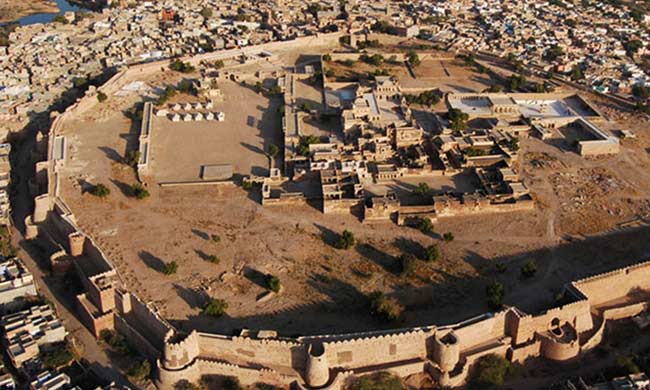
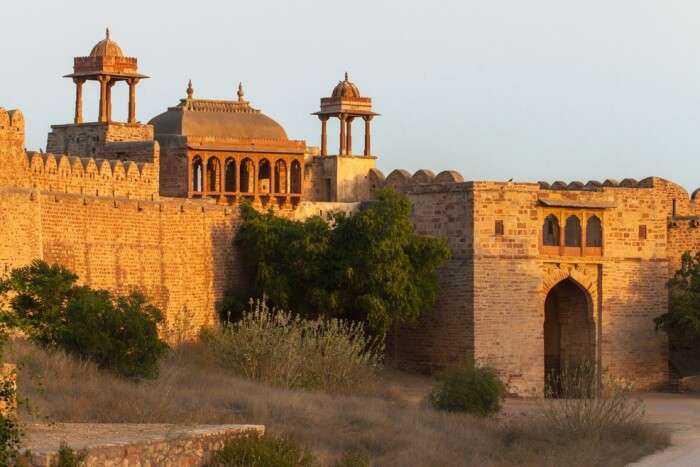








/GettyImages-1081266451-5ab50c7f8023b90036495226.jpg)








